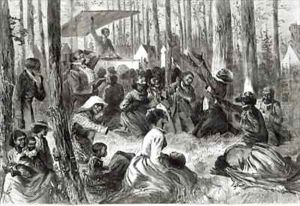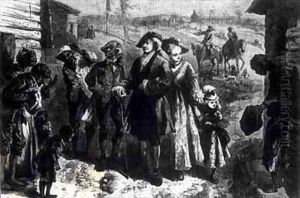Eytinge, Solomon Paintings
Solomon Eytinge Jr. was an American illustrator and graphic artist known for his distinctive work during the 19th century, particularly in the realm of book and magazine illustration. Born on December 23, 1833, in New York City, Eytinge was part of a vibrant community of artists and writers that defined American visual and literary culture during his time. His career was marked by a keen ability to capture the essence of narrative through his illustrations, making him a sought-after artist for publishers and authors alike.
Eytinge's most notable work is perhaps his illustrations for the novels of Charles Dickens, which were published in the 1860s by Ticknor and Fields as part of the Diamond Edition of Dickens' works. These illustrations were widely praised for their ability to complement and illuminate Dickens' complex characters and intricate plots, showcasing Eytinge's skill in visual storytelling. His work on Dickens' novels has been credited with helping to popularize the author's work among American readers, contributing to the lasting legacy of both Dickens and Eytinge in the world of literary art.
In addition to his work on Dickens, Eytinge contributed to various periodicals of his time, including Harper's Weekly and Vanity Fair, where his illustrations helped to define the visual style of American magazines. His ability to convey emotion and character through his drawings made his work highly effective in the context of magazine journalism, which often required illustrations that could tell a story at a glance. Despite facing health challenges and periods of incarceration that affected his productivity and public perception, Eytinge continued to work and innovate in the field of illustration until his death on December 14, 1905.
Eytinge's legacy is that of a pioneering illustrator whose work bridged the worlds of literature and visual art, enhancing the narrative power of stories through his imaginative and evocative illustrations. Though not as widely remembered as some of his contemporaries, Eytinge's contributions to the field of illustration and his role in popularizing some of the 19th century's most important literature have ensured his place in the history of American art.

